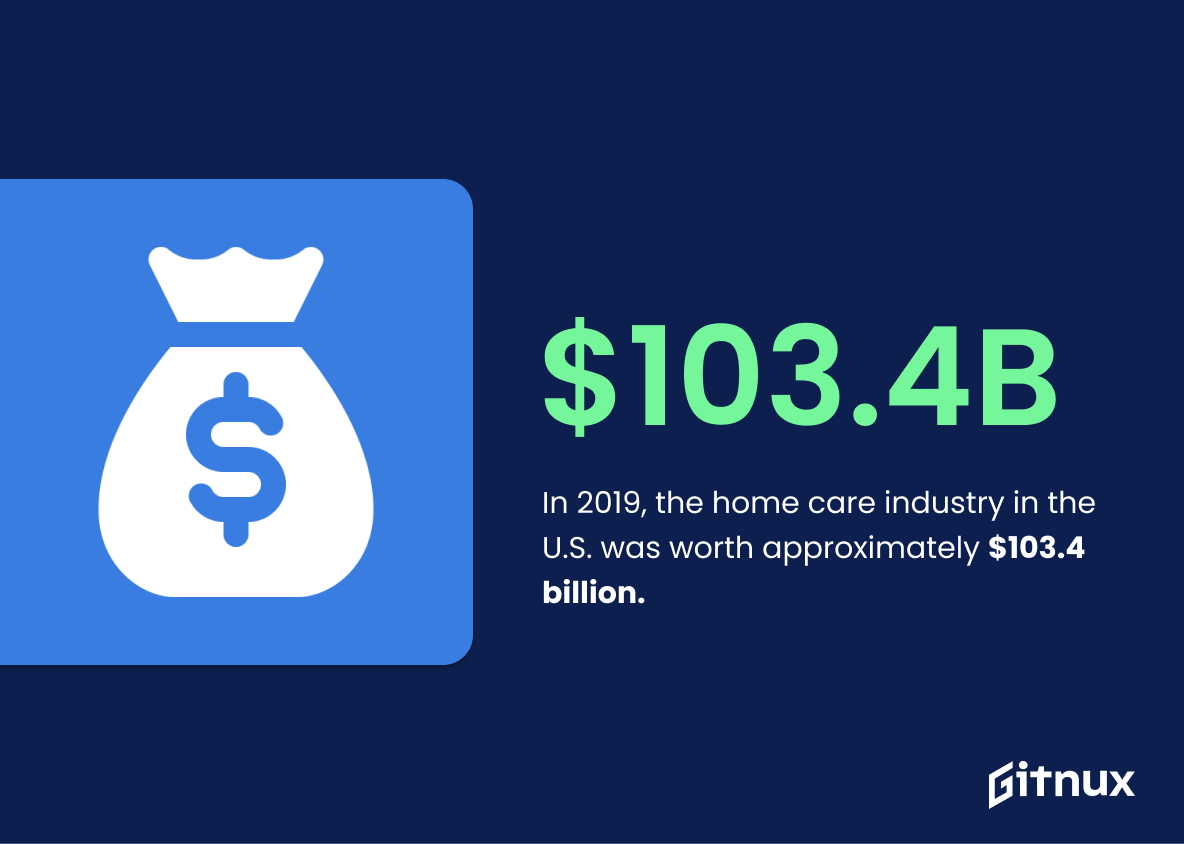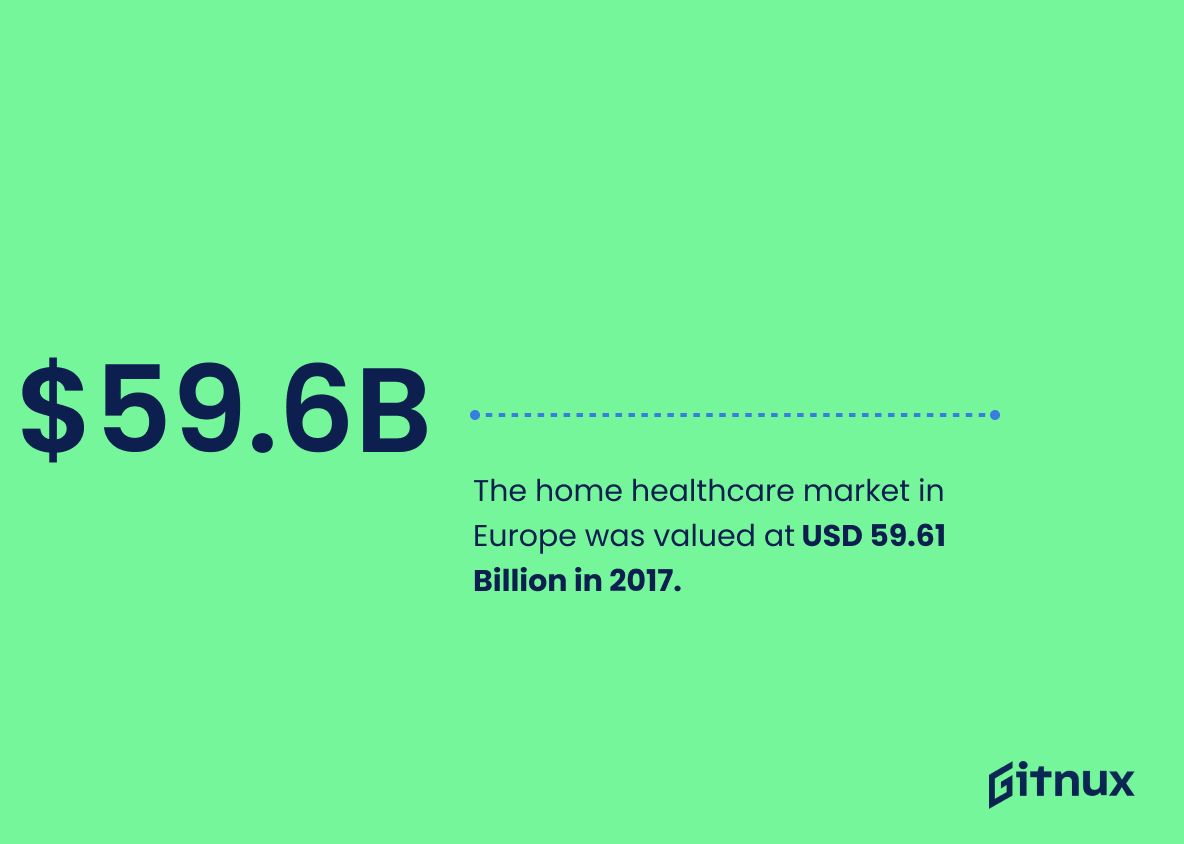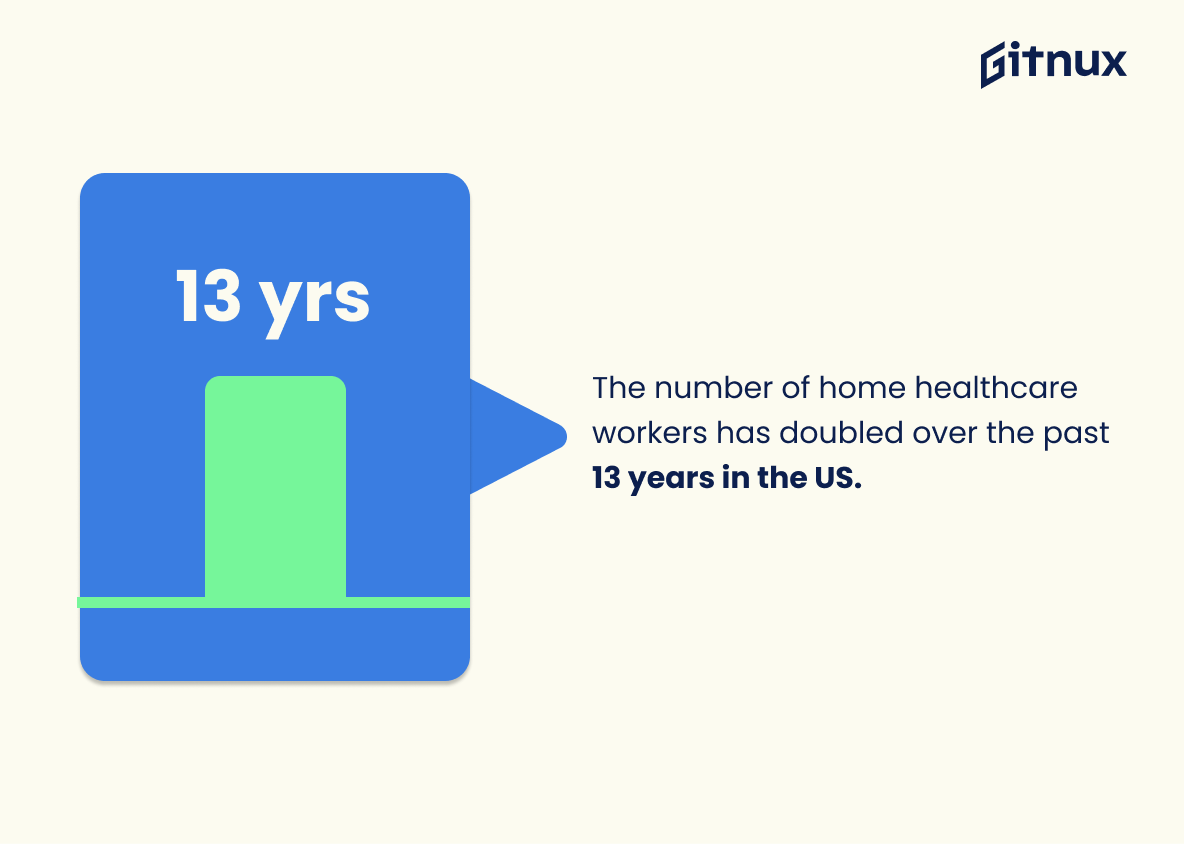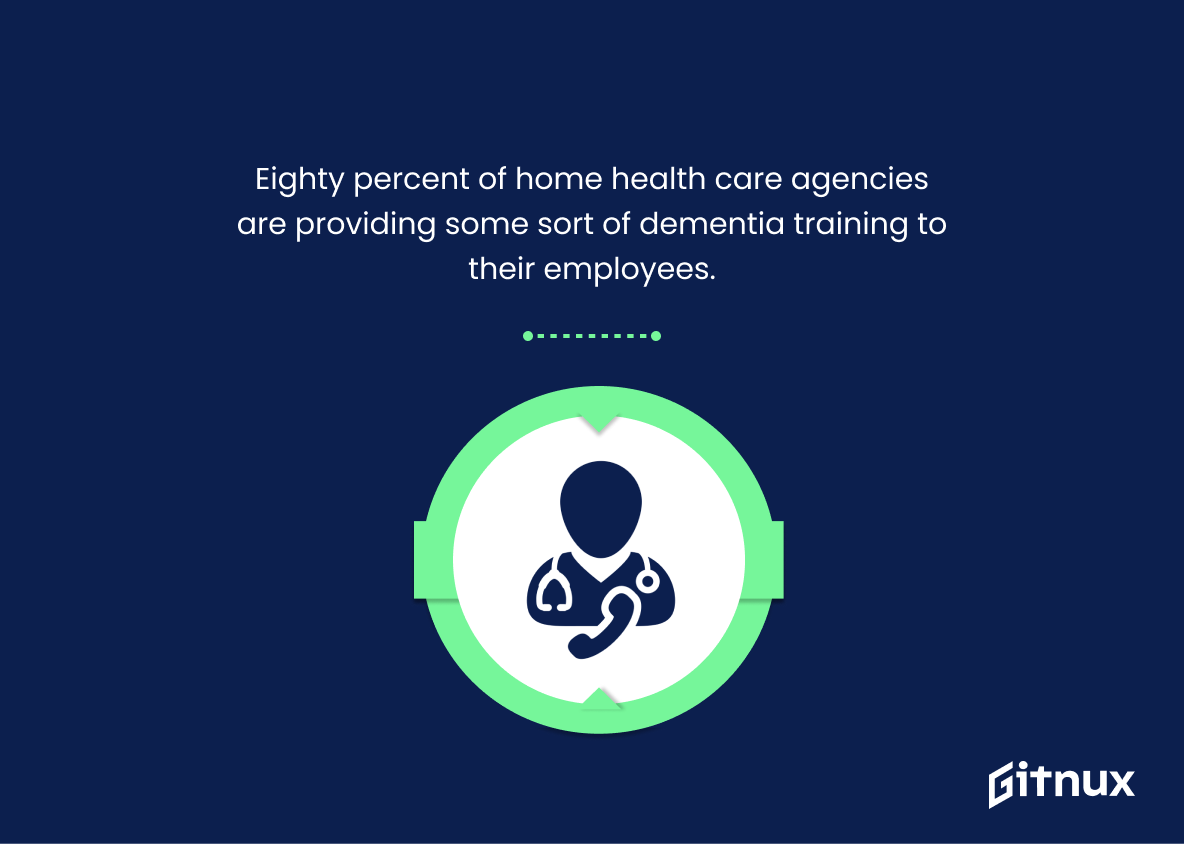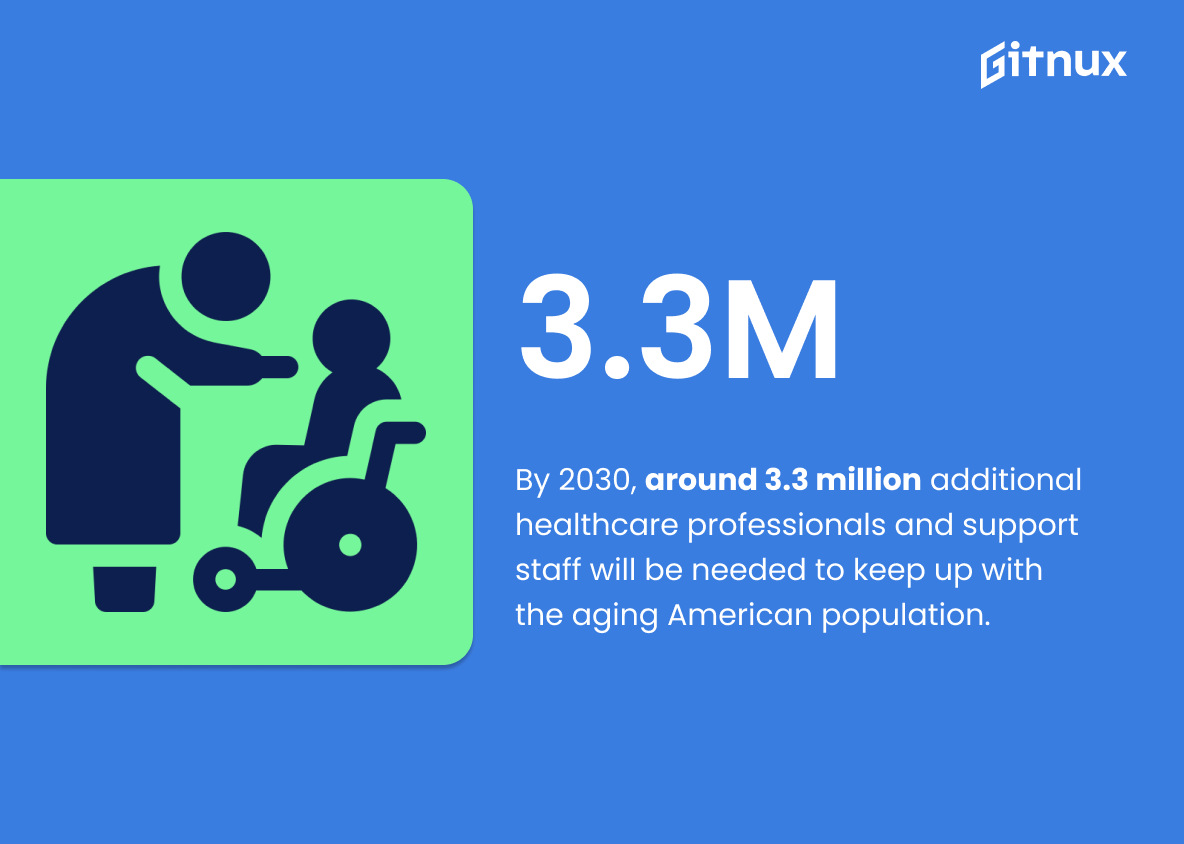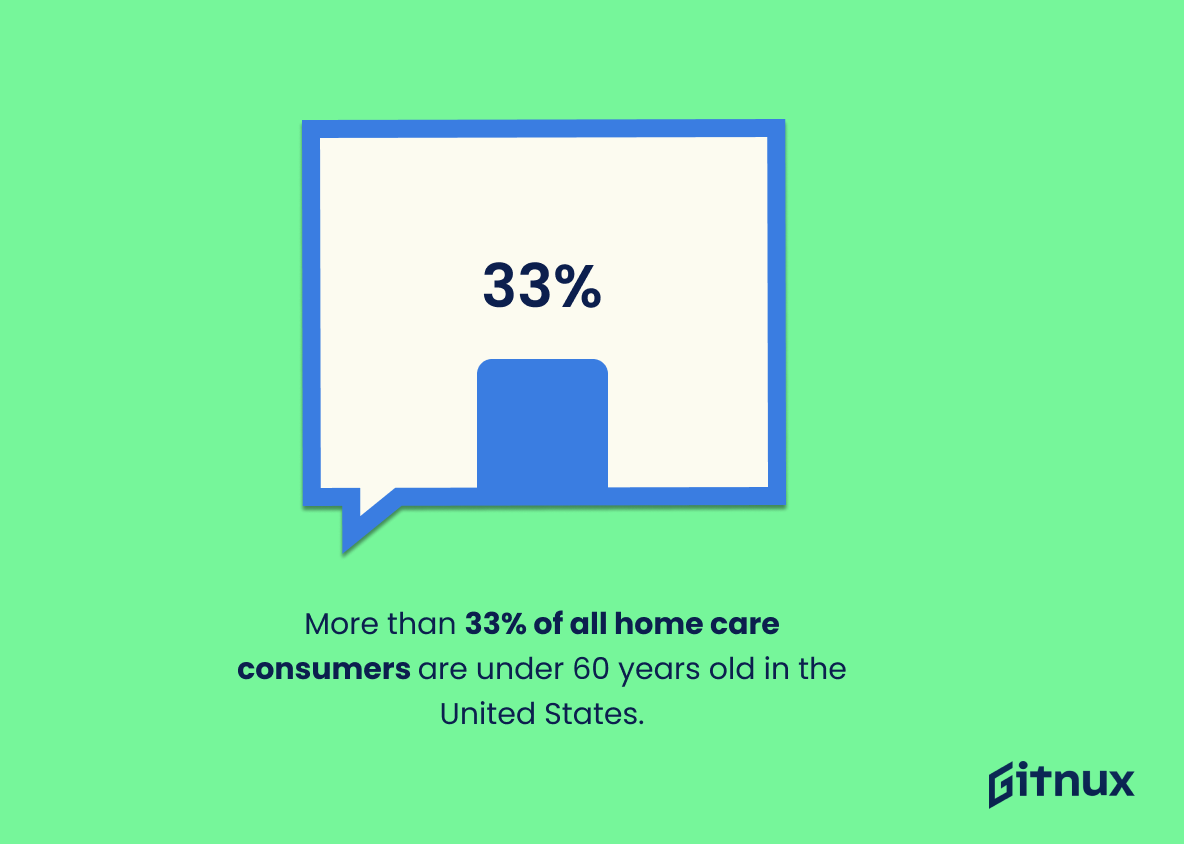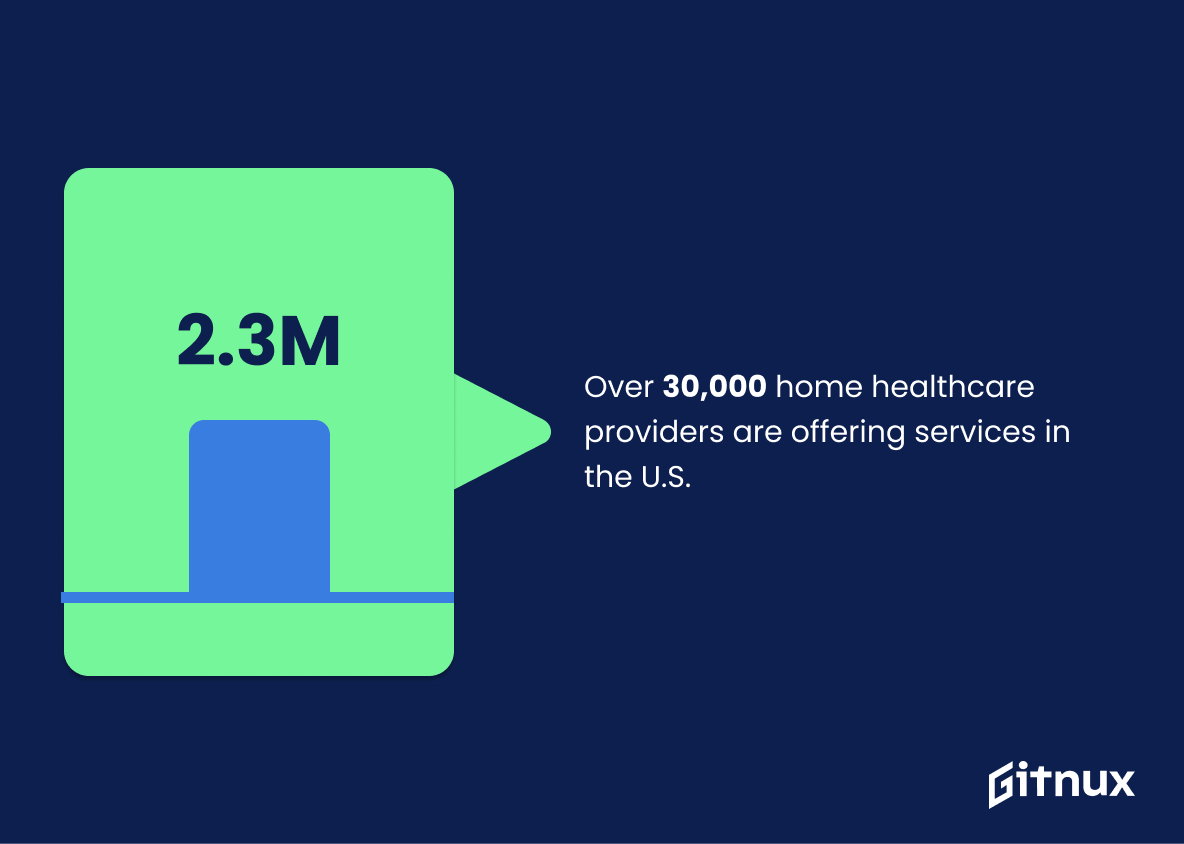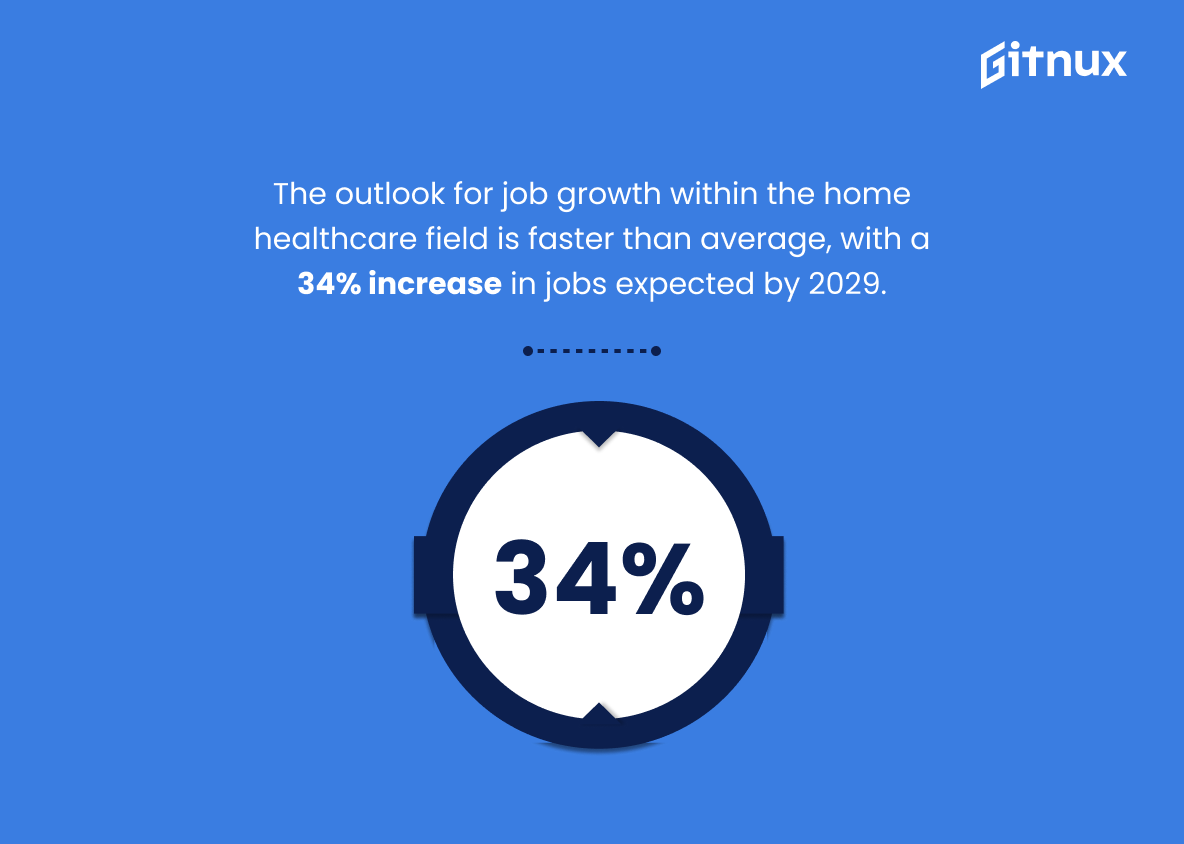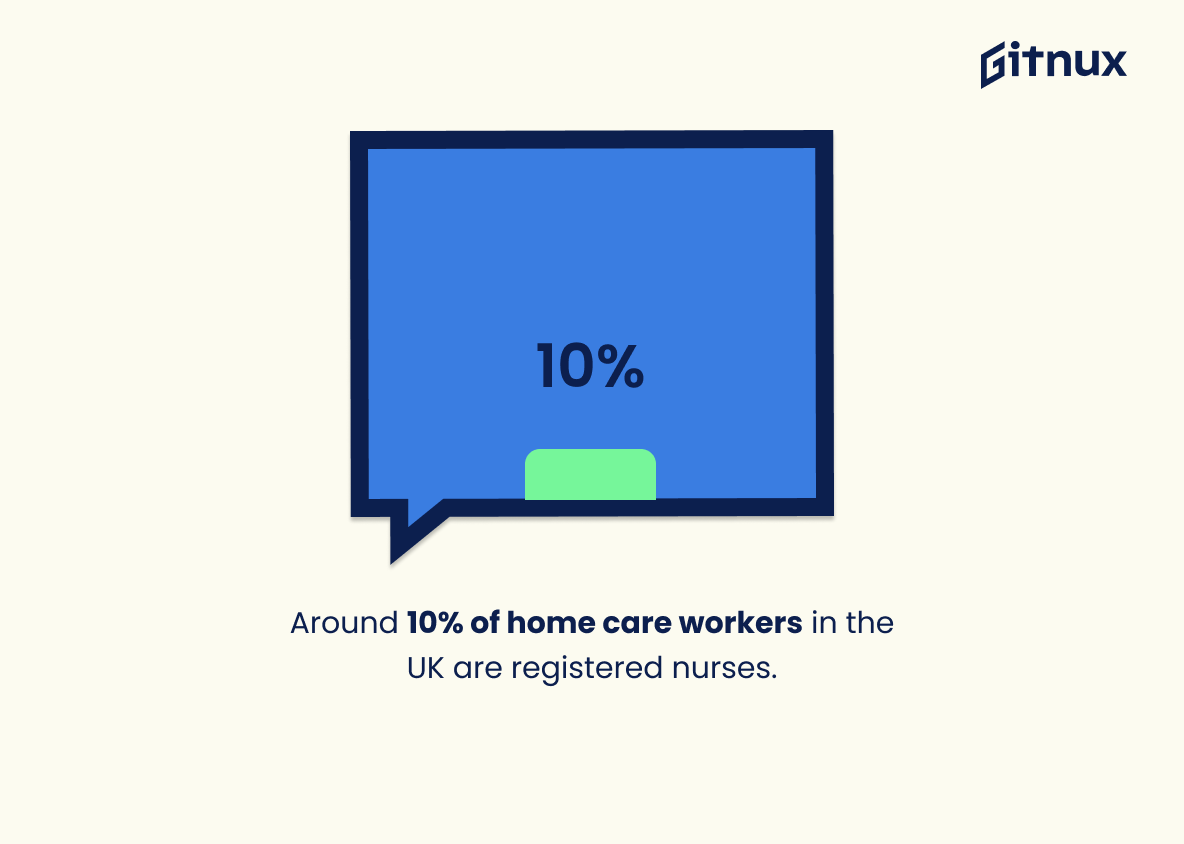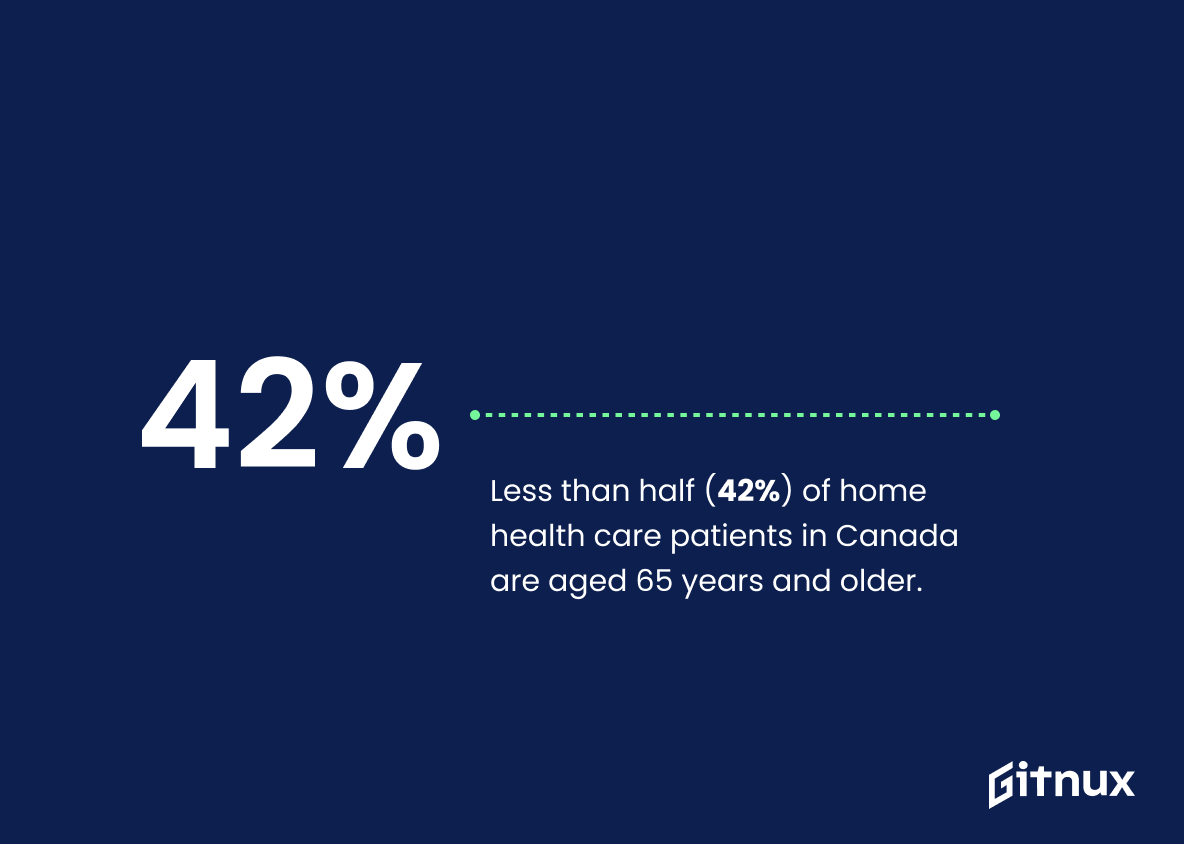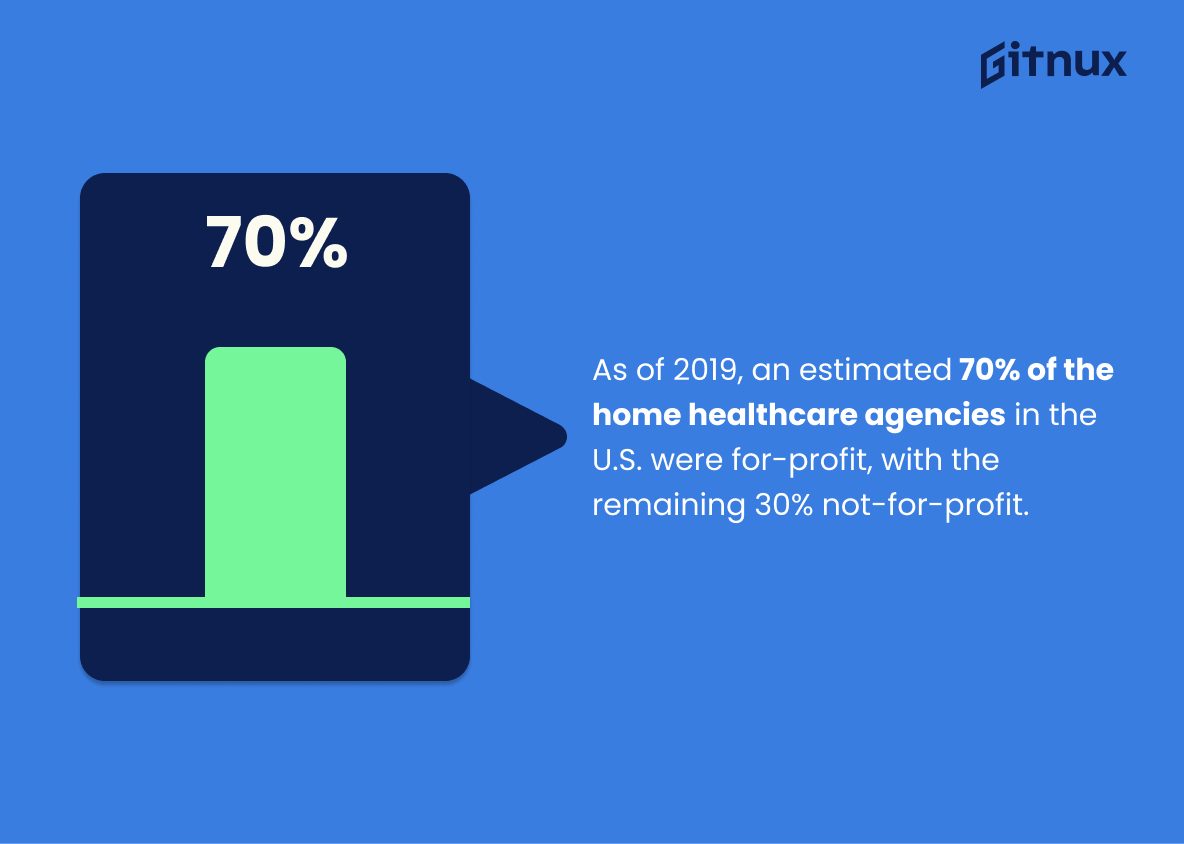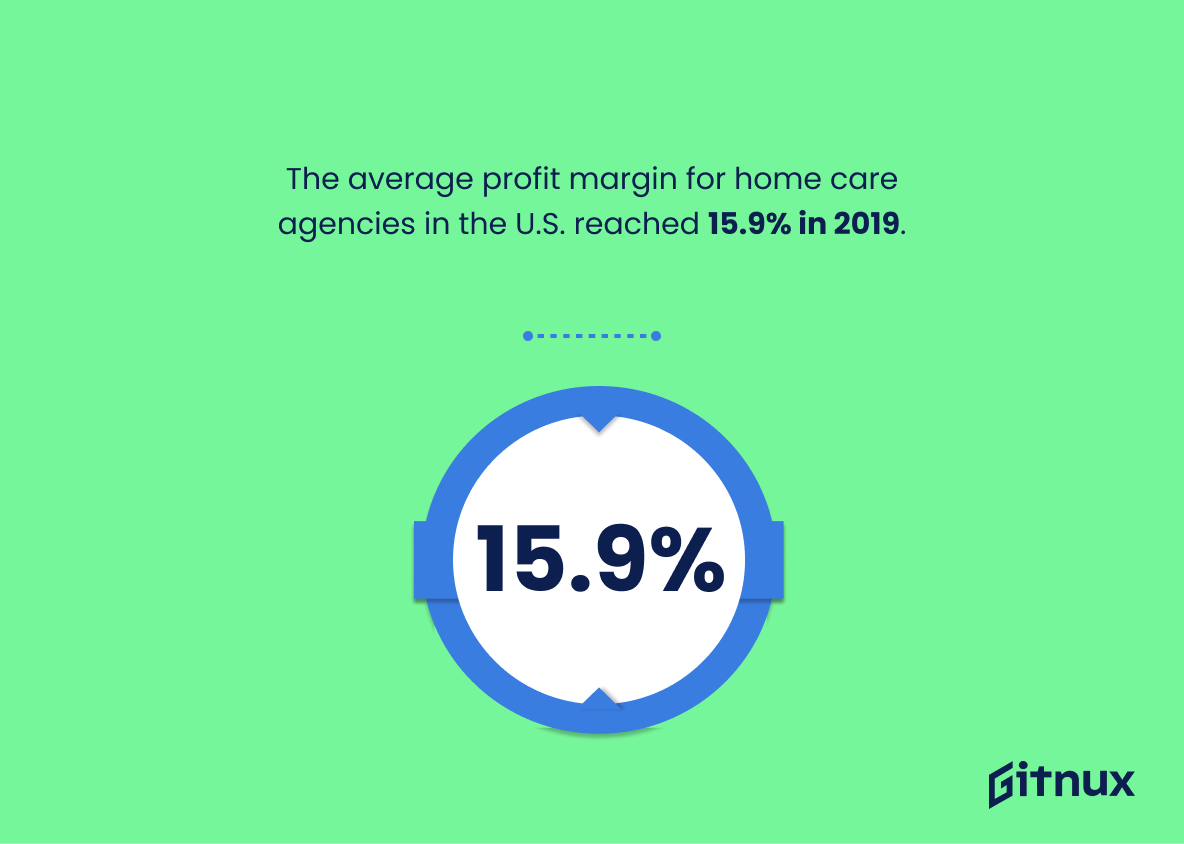Step into the vast expanse of the Home Care Industry, a thriving sector whose lifelines extend beyond providing physical care, delving deep into the emotional, social, and psychological well-being of individuals. This blog post unravels the world of Home Care through a numerical lens, presenting an array of enlightening industry statistics that underscore its triumphs, trials, and evolving trends. Whether you’re an industry veteran, a newcomer, or someone seeking insights into the sector’s landscape, this analytical journey captures the critical data necessary to comprehend the industry’s current state and potential trajectory. Let’s delve into the figures and facts that are shaping, defining, and driving the home care industry today.
The Latest Home Care Industry Statistics Unveiled
In 2019, the home care industry in the U.S. was worth approximately $103.4 billion.
The noteworthy figure of $103.4 billion reflects the economic clout of the home care industry in the U.S. in 2019, painting a vivid picture of its substantial impact on the American economy. Shining a spotlight on this robust industry, this compelling statistic underpins the growing demand for home-based healthcare solutions, and the escalating number of opportunities therein. In the grand scheme, this key nugget of information operates as a bellwether, revealing the continuing shift towards in-home care, and serving as a lodestar for those investing or working within this sector, while contributing to a detailed analysis on the evolving landscape of the American home care industry.
By 2027, the global home healthcare market size is expected to reach USD 515.6 billion.
Projecting a massive growth to a staggering USD 515.6 billion by 2027, the global home healthcare market value implies both challenge and opportunity in the home care industry. It sets the stage for a promising future, with home health care service demand projected to soar globally, leaving room for tremendous growth. The statistic also highlights the significance of readying the sector for this progressive wave, both in terms of capacity and the quality of care offered. Overall, the statistic underlines the fact that companies which strategically plan and adapt will find a fertile playing field in this expanding market.
The home healthcare market in Europe was valued at USD 59.61 Billion in 2017.
Drawing attention to the awe-inspiring value of the European home healthcare market in 2017, at an impressive USD 59.61 billion, is not just a number dropped onto a piece of paper. It is simply a numerical passport leading us through the thriving sector of the home care industry. It illustrates the robust demand and zealous investment stirring within this industry. This billion-dollar figure is a resonating whisper of the relevance and vitality of home healthcare in a rapidly aging Europe. Furthermore, it sketches a promising landscape for potential investors and stakeholders, encouraging them to be pioneer riders on this profit-laden bandwagon. It’s not a mere fragment of the financial jigsaw, but a critical piece shaping the entire picture of the home care industry.
The number of home healthcare workers has doubled over the past 13 years in the US.
Unveiling the significant rise in home healthcare workers in the US over the past 13 years rightfully sets the stage for understanding the transformation in the home care industry. It artistically paints a picture of a sector steadily moving away from the traditional in-facility care towards in-home care. Simultaneously, it underscores the increasing demand for home-based healthcare services, reflecting alterations in patient preferences or the impact of an aging population. This rise in home healthcare professionals is a vital fragment of the industry’s evolving landscape, shaping conversations about workforce development, service demand, quality of care, and policy-making in the sector. It’s like a compass guiding us through the labyrinth of industry trends, impacts, and future forecasts.
Eighty percent of home health care agencies are providing some sort of dementia training to their employees.
In the realm of Home Care Industry Statistics, a striking revelation is the fact that a substantial 80% of home health care agencies have begun to offer some kind of dementia training to their employees. This nugget of information serves as a potent indicator of the industry-wide acknowledgement of the growing prevalence of dementia among older adults. Moreover, it highlights the concerted efforts being made within the industry to equip caregivers with the needed expertise to address this health challenge. By doing so, agencies not only improve the quality of care offered but also contribute to reducing the social and economic impacts of dementia. Therefore, this statistic can be seen as a testament to the evolving trends and the drive for competence in the home care industry.
By 2030, around 3.3 million additional healthcare professionals and support staff will be needed to keep up with the aging American population.
Peering into the future, the prediction of a demand surge for 3.3 million more healthcare professionals and support staff by 2030 paints an exciting, albeit challenging, landscape for the home care industry. Visualize this demand as an ocean tide about to rise; preparing for it now can mean riding the wave to prosperity for home care providers. As the American population gracefully advances in age, home-based care will increasingly serve as their sanctuary, imbuing home care with a vital role. This projected significant uptick in healthcare staff need can signal a plethora of opportunities, career growth, and broader service offerings within the home care sector. Furthermore, it underlines the urgency to invest in quality training, decent pay scales, and in reinforcing the workforce from now. The home care industry, it seems, stands on the brink of a dynamic phase, opening the doors wide for innovation, expansion, and enhanced service quality.
More than 33% of all home care consumers are under 60 years old in the United States.
Highlighting that over a third of all home care consumers are under 60 shakes up common perceptions about the demographic of those who use such services. Typically, one might think of home care as a service predominantly sought by the elderly. However, this statistic presents a shift, suggesting a broader age range actively utilizing home care. This data could be of immense importance to those within the home care industry, causing them to re-evaluate their target audience and possibly consider tailoring their services not only to seniors but also to those in their fifties or even younger. There is a clear implication for industry growth and diversification, broadening the potential market base for home care services in the United States.
The Indian home healthcare market is projected to reach USD 10 Billion by 2025.
Delving into the vast ocean of the home healthcare market, one can’t help but notice a powerful wave shaping its trajectory – India. Set to catapult to a staggering USD 10 Billion valuation by 2025, India emerges as an irresistible epicenter of growth in the home care industry narrative. This forecast does more than just signal monumental growth; it paints a compelling picture of the emerging dynamics in the global health care sector. Such an exponential rise brings to fore the increasing acceptance and dependence on home-based care solutions in India, reflecting trends that could hold relevance for similar globally expanding markets as well. Unpacking this projection in your blog post about Home Care Industry statistics thus adds a robust dimension to the discussion, weaving intricate threads of international perspectives, market trends, and economic growth relevant to industry insiders, potential investors, and curious readers alike.
Over 30,000 home healthcare providers are offering services in the U.S.
Highlighting the figure of over 30,000 home healthcare providers operating in the U.S. paints a vivid picture of the vastness and importance of the home care industry. These numbers underscore a compelling demand for this type of service, reflecting not just an aging population in need of care, but also a valued choice for many families who prefer home-based care for their loved ones. Furthermore, these figures might hint at the dynamism and competitiveness in the industry, stimulating advancements in quality and variety of care services. In that framework, understanding these substantial numbers becomes instrumental, shedding light on the significant role the industry plays in today’s healthcare sectors and family settings.
The outlook for job growth within the home healthcare field is faster than average, with a 34% increase in jobs expected by 2029.
In the vibrant symphony of the Home Care Industry Statistics blog post, the forecast of a 34% increase in job growth within the home healthcare field by 2029 strikes a resonant chord. It strums the strings of imminent expansion, raising ambient notes of opportunity for job seekers and entrepreneurs alike. This crescendo in growth prediction underscores the increasing demand for home care services, painting a vibrant picture of a blooming sector eager to welcome a surge of new professionals. Furthermore, it hums a tune of assurance for those considering careers in this field, framing the home healthcare industry as a flourishing, steady landscape ripe with possibilities for the years to come. With its melody of promise, this statistic crescendos to amplify the dynamic composition of this insightful blog post.
1.4 million people in the UK received domiciliary care in 2019.
Interpreting this statistic sheds light on the sheer volume of individuals that relied on domiciliary care services across the UK during 2019. This considerable figure, standing at a robust 1.4 million, underscores the magnitude and relevance of the home care industry. It delineates the deep-seated reliance on professional care within the domestic environment, and quite significantly, demonstrates the impact of these services on improving quality of life, promoting independent living, and catering to the growing needs of the ageing population and other individuals requiring at-home care. As such, this figure serves as a critical compass guiding businesses, policymakers, and stakeholders alike in understanding consumer needs, formulating effective strategies, and making informed decisions for the future growth and betterment of the home care industry.
Around 10% of home care workers in the UK are registered nurses.
Delving into the fabric of the UK’s home care industry, it’s intriguing to peel back the layers and find that nearly 10% of home care workers are registered nurses. This glimmering kernel of truth lends valuable insight into the skillful undercurrent flowing through the industry. As caretakers in people’s homes, these nurses bring a heightened level of expertise and clinical savvy that enriches the quality of care provided. Moreover, knowing that a respectable fraction of home care professionals possess such comprehensive training, may instill reassurance within the public, thus fostering trust and initiating a dialogue about improving quality standards across the sector. Given these implications, this statistic becomes a key player in unfolding the story of the home Care industry in the UK.
Less than half (42%) of home health care patients in Canada are aged 65 years and older.
The spotlight on this particular statistic offers remarkable insight, unveiling a vivid perspective on the age demographic of home health care patients in Canada. With only 42% belonging to the age group of 65 years and older, this fragments the preconceived notion that home health care exclusively or predominantly seats the elderly. This breadth of ages seeking home health care underscores the importance of ensuring that the home care industry caters to a more diverse set of needs, aptly addressing the varying requirements of different age categories. Furthermore, it signifies an expanded market opportunity for the industry beyond the elderly care services. It allows those in the home care industry to strategize and create offerings that fit a broader audience, serving not only elderly patients but also individuals who may need post-hospitalization support, chronic disease management, or other types of home health care services.
As of 2019, an estimated 70% of the home healthcare agencies in the U.S. were for-profit, with the remaining 30% not-for-profit.
Shedding light on the intriguing financial landscape within the home healthcare industry, we stumble upon the revelation that a significant majority – a whopping 70% of these agencies in the U.S in 2019 found their roots in for-profit motives. In stark contrast, the remnants- a mere 30% dabbled in not-for-profit terrain. This profound dichotomy undeniably invites further analysis and discussion, as it unveils the substantial prevalence of profit-oriented businesses in the industry. Therefore, such an intriguing statistic enhances our comprehension of not only the profit dynamics at play but also paves the path for delving deeper into the myriad factors that influence an enterprise’s choice between for-profit and non-profit operation models in the evolving home care space.
The average profit margin for home care agencies in the U.S. reached 15.9% in 2019.
Highlighting the average profit margin of 15.9% for home care agencies in the U.S. in 2019 paints a robust financial picture of the industry, signaling to potential investors, entrepreneurs, and other stakeholders about its profitability. The figure offers an insight into the profitability landscape, fueling the conversation around financial sustainability and revenue growth in the home care sector. In the arena of home care industry statistics, it acts as a beacon, drawing attention to the sector’s underlying prosperity, and paving the way for future investment and development plans.
The home care providers industry in Australia has grown by 3.2% annually between 2016 and 2021.
Unearthing the compelling layers of the home care providers industry in Australia, one discovers a remarkable growth story. This narrative is illustrated by the annual increase of 3.2% from 2016 to 2021. This upward trend underlines the robust health and potential of Australia’s home care sector, lending a bright and optimistic aura to its future. Moreover, it hammers home the notion that this sector is evolving into a formidable contender in the nation’s economy, echoing signals of a progressive shift in the landscape of aged and health care. Thus, this statistic becomes the lifeblood of our discourse on Home Care Industry Statistics, illuminating not just its historical trajectory but also providing a tangible testament to its future promise and scope.
About 13,400 home care providers were operating in Australia in 2021.
In light of mapping the Australian home care industry, it’s quite breathtaking to view the expanse of roughly 13,400 home care service providers blanketing the Nation in 2021. This number underscores the sizeable demand for home care services, hinting at Australia’s steadily increasing aging population and their preference for aging-in-place. It speaks volumes about the robust, competitive market, where the drive to offer superior services is higher than ever. Furthermore, this vast network of providers is crucial in offering employment opportunities and stimulating the Australian economy. The copious number of providers also exemplifies the industry’s resilience and adaptability in the face of global health crises like the Covid-19 pandemic. All these factors intertwine to paint a detailed and tantalizing picture of the home care industry for readers of our blog post, and potential investors into this booming industry.
Conclusion
The home care industry’s sheer growth and potential can’t be overlooked. With an aging population, rising healthcare costs, and a growing preference for at-home care, the industry is set for unprecedented expansion. In this vast field of opportunity, tracking the trends and key statistics can provide critical insights for those seeking to launch, expand, or invest in home care services. As the industry continues to evolve, being well-informed can make the difference between success and failure. Ultimately, the home care industry’s future promises new challenges, but with those challenges come avenues of immense potential. The right knowledge, coupled with strategic planning, can help steer businesses towards tapping into that potential effectively. Remember, numbers and statistics matter, but what matters most is how you use that information to grow and adapt in the ever-changing landscape of home care.
References
0. – https://www.www.nuffieldtrust.org.uk
1. – https://www.www.researchandmarkets.com
2. – https://www.www.homehealthcarenews.com
3. – https://www.publichealthmatters.blog.gov.uk
4. – https://www.phinational.org
5. – https://www.www.aha.org
6. – https://www.www.ibisworld.com
7. – https://www.www.grandviewresearch.com
8. – https://www.www.bls.gov
9. – https://www.www.statista.com
10. – https://www.www.marketwatch.com
11. – https://www.www.cihi.ca
